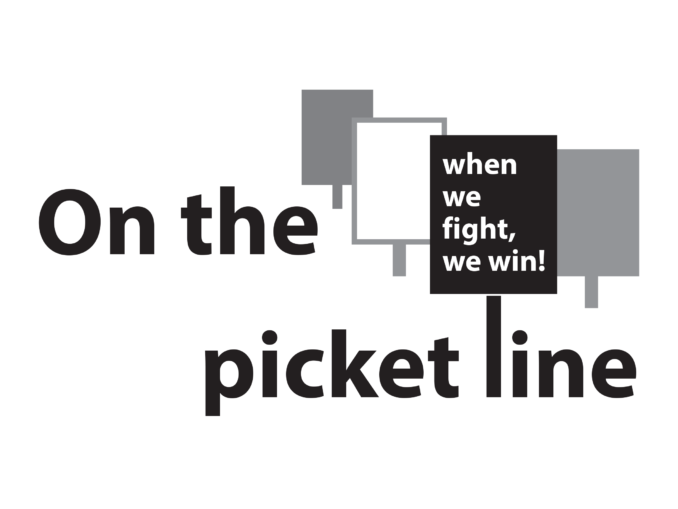On the picket line

Bosses retaliate against Hunts Point workers
Business retaliation against union organizing is nothing new. Weak laws and minimal fines embolden corporations like Amazon to hire strikebreaking law firms to intimidate workers into voting down attempts to unionize their workplace. Workers who strike or successfully organize face the threat of losing their jobs.
Teamsters Local 202 reports that at least 26 union members from Hunts Point Produce Market in New York City have been laid off since work resumed following the strike for a $1 an hour pay increase. These essential workers continued to work 12-hour shifts throughout the pandemic. Hunts Point Market is a vital link in the food distribution system for this country.
Proving that the layoffs are retaliatory is difficult and labor laws don’t go far enough to protect workers’ organizing efforts. (tinyurl.com/87776sh8)
Disabled workers fight in Cincinnati
Visually impaired and blind workers, who are two-thirds of the workforce at a factory run by the Cincinnati Association of the Blind and Visually Impaired, have petitioned management to address unfair labor and safety concerns. After the factory reopened following a pandemic-related shutdown, management failed to follow seniority rehiring rules. The complaint states several blind workers have been unfairly targeted and not reinstated.
Other workers were brought back and forced to work in different jobs for less pay. The company also removed safety barriers that had protected disabled workers from areas where heavy machinery is used. Dave Perry, a visually impaired member of Teamster Local 100 and factory worker, referenced Teamster organizers of the 1930s who preferred a short, page-long union contract. He said, “the bosses clearly seem to have more difficulty sticking to even that length of a contract without us making them do it.” (the Militant, March 8)
Teachers union ties to Women’s History
Prior to the industrial revolution, teaching was a job for men. There was no public education system, and teaching was nothing like the profession it is today. Industrialization provided more work opportunities, and men moved on to better and higher paying jobs and away from teaching. Young women were tapped to become teachers to fill the gap, because of the expanding population in the late 19th century and the development of the public school system.
Patriarchy still defined the field. Women were paid less than their male counterparts and were forced to leave their positions when they married. Men were the administrators of the public school system. Women responded to this exploitation by demanding better conditions and equal pay. The Chicago Teachers Federation was formed in 1897 by teachers Catherine Coggin and Margaret Haley. It grew into what is today the American Federation of Teachers, one of the most powerful unions in the country. By the 1940s, the AFT was collectively bargaining with school boards.
Today, AFT and other teacher union locals in major cities across the country are fighting for the safety of their members. They are defying mayors and board of education officials by refusing to return to in-person classrooms until it is safe for both teachers and their students. They continue the legacy of the women who defied the patriarchal norms of the 19th and 20th centuries. (tinyurl.com/rnh957nw)

